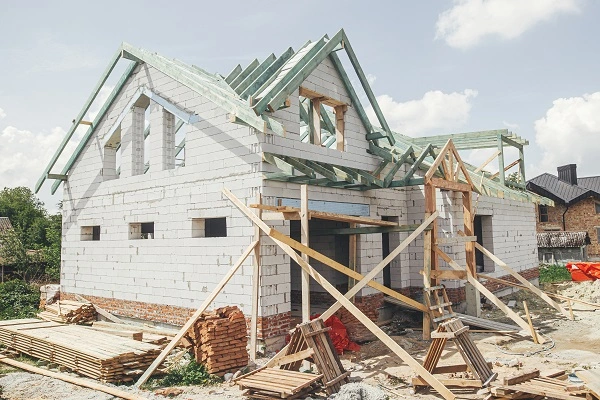The practice of approximating the cost of completing a work job on the available, often incomplete design information for construction projects is known as estimating. The success of each project and, eventually, the business’s success depends heavily on the general contractor’s (GC) ability to estimate effectively and consistently. Contractors cannot win building contracts if they do not have competent construction estimating services.
Estimates that are incomplete may cause bankruptcy for several clients. One may say that the most crucial goal for GCs to achieve at the top of their game is to estimate, not that it’s easy work or a procedure to be taken lightly.
What is the scope of construction estimates?
Construction estimates are to come in to action throughout a project’s design lifecycle. Although the amount of information and completeness of the estimates at each design phase varies. The method of making any cost estimate is the same.
Throughout the design phase, the contractor must be able to provide the project owner and designers with accurate and trustworthy estimate information so that the design may be built for the owner’s budget as it develops.
Calculating the Timetable
The superintendent, project manager, and skilled project engineer should lead the estimate development process whenever feasible, or at the very least, play a crucial role in the estimating team. To guarantee not just the success of the estimate but also the project’s eventual success, each person’s unique contribution and personal dedication to the estimating result are crucial.
Some of the estimating team’s first tasks are creating a responsibility list, planning how to approve the estimate, and scheduling it. Every project should have a timeline for the estimating process that starts with the pre-bid or pre-proposal conference dates and ends with the bid or proposal deadline.
A logical sequence of stages follows to prepare construction cost estimates, and each depends on the timely, accurate, and effective completion of the work that came before it. Scheduling the estimate process, which is not the same as planning the estimate work, is one method many estimators use. The quality of the estimate as a whole might be ineffective if any stage in the estimate process takes longer than expected. A work breakdown structure is an extra tool that most professional schedulers and estimators employ. This is essentially a list of all the construction tasks to complete the project.
Different Estimate Types
Contractors must prepare cost estimates at every stage of a project’s design. Each estimate will have variable degrees of contingency and risk assessment because its correctness and completeness will mostly depend on how well-documented the design papers are.
- Estimate for programming or conceptual design
- Estimates for schematic design
- Design development estimates
- Estimate for construction documents.
For those involved in the built environment, such as contractors, designers, and project owners, the word “estimate” has distinct meanings. There has been debate over the distinctions between estimates, bids, and budgets, even in the legal system.
Programming Budget Estimates
Early in a project, a program estimate is best for projects with very little to no design information besides the project’s location, building area and use. The program-level estimates are by using past unit costs for comparable structures in the project region, appropriate modifications for site development and enhancements depending on the project’s location.
This outlines two features.
- Project viability
- Project funding
During the programming phase, the project owner must use the program estimate from the general contractor (GC) to fill up the project budget.
The term “developer” refers to a project owner creating a construction project for profit or as a company. This type of owner will make a financial pro forma using various other owner expenditures and the construction estimate provided by the general contractor.
The pro forma’s components are:
- The price of buying a piece of real estate
- Construction spending plan
- Fees for engineering and design
- Rights & Permissions
- Applicable sales taxes, including municipal and state
- Fees for testing and inspections
- Insurance and bonds
- Furnishings, equipment, and fixtures (FF&E)
- Off-site enhancements
- Relocation costs
- Unforeseen circumstances
- Interest paid on the loan for construction
- Tenant improvement allowances, development fees, legal costs, and other expenses.
Construction Estimate for Schematic Design
Schematic design estimates are when the design is around 30% finished. These are all “relative” percentages of design completion, with a range of +/- 10% and susceptible to many factors and viewpoints. The format for the contractor’s estimate is now set and will be throughout the estimating process. Cost assemblies, or building systems, are the most common format for cost estimates.
Another early style for budget estimates was based on Construction Specification Institute (CSI) categories instead of Uniformat systems. This approach groups the estimate according to CSI divisions, which is more in line with technical requirements, also called Master Format.
Contractors will quantify as much as possible to get an accurate cost estimate, considering the degree of design and the information present. They will then apply past unit prices to the measured material quantiles.
What enters as indirect expenses?
The contractor’s indirect expenses, which includes general conditions, taxes, insurance, bonds, and fees, are regularly part as a percentage of the SD estimate summary cost.
The amount of contingency contained in the GC’s estimate is another crucial component that changes according to how comprehensive the documentation is.
The following contingencies are in the contractor’s estimate at the schematic level:
- Plan Contingency
- Construction Backup Plans
- Calculating Backup Plans
This estimate’s objectives are:
- Creating a preliminary construction budget
- Endorsing the master use permit application
- Assessing substitute design ideas
- Finding alternatives for value engineering
- A means of communication for contractors and designers.
Design Development Estimate
Estimates for design development (DD) are best when the design is around 70% complete. We also refer to these estimations as semi-detailed estimates. At this stage, the contractor will keep using the system’s format and do thorough quantity surveys for the scopes of work included in each estimating system, paying close attention to the tasks that the contractor performs independently, including carpentry, steel, and concrete.
Additionally, at this stage of the design, the contractor might ask the subcontracting community for assistance in estimating the cost of other building systems.
Subcontractors may offer preliminary budget pricing on the market conditions or supply the General Contractor with unit pricing as per GC’s numbers.
Obtaining trustworthy information from subcontractors regarding complex systems such as mechanical, electrical, fire protection, and speciality products is critical.
How allowance help leverage accurate estimates?
The appropriate utilization of allowances is a crucial component of the DD estimate. Costs for known scopes of work that have not yet been designed are known as allowances. FF&E, floor covering, gardening, and signage are good examples. When discussing the scope of work included as allowances with the project owner, the contractor should be exact and concise.
At this stage of the estimate process, the estimator will be able to provide a thorough general condition estimate, as opposed to a percentage add-on, as was done with the SD estimate, because the GC is aware of the construction timetable and the expected workforce. This significantly lowers the general conditions element of the estimate’s risk for the GC.
This estimate is beneficial for:
- Different design ideas
- Calculating the Amount of the GMP Contract
- Verifying the construction budget of the owner
- Giving subcontractors assurances
- Application for construction finance and building permits
Estimate for Construction Documents
Based entirely on design documents, the construction document (CD) estimate will contain competitive bids for all subcontractors’ work scopes, significant material supply items, and comprehensive and thorough quantity take-offs for any work the contractor performs independently. The contractor’s general conditions will be precisely calculated, much like the DD estimate, considering their timeline and the expected number of workers needed on the task site.
With the completion of the design, contingencies will be reduced or become nonexistent. Based on discussions with a private owner, the contractor may add fair levels of construction and estimate contingencies. This will differ depending on the project and is typically not included in competitive lump sum bids.
These construction estimates are valid for the following:
- GMP contract values
- Getting Ready All-in bids
- Loan application for building
- Agreements on contracts
In summary
The four main design processes are programming, schematic design, design development, and construction documents. At each of these stages, contractors create various estimates, such as lump sum bids, ROMs, budgets, and GMPs. These estimate formats differ from contract pricing techniques but have some commonalities.
Both the design and contractor-generated construction cost estimates become more accurate as the design advances. As estimating accuracy and design both improve, so do the contingencies in the estimates. Particularly in the early stages of the design and budget phases, contractors frequently provide qualification and assumption documents and cost estimates.





